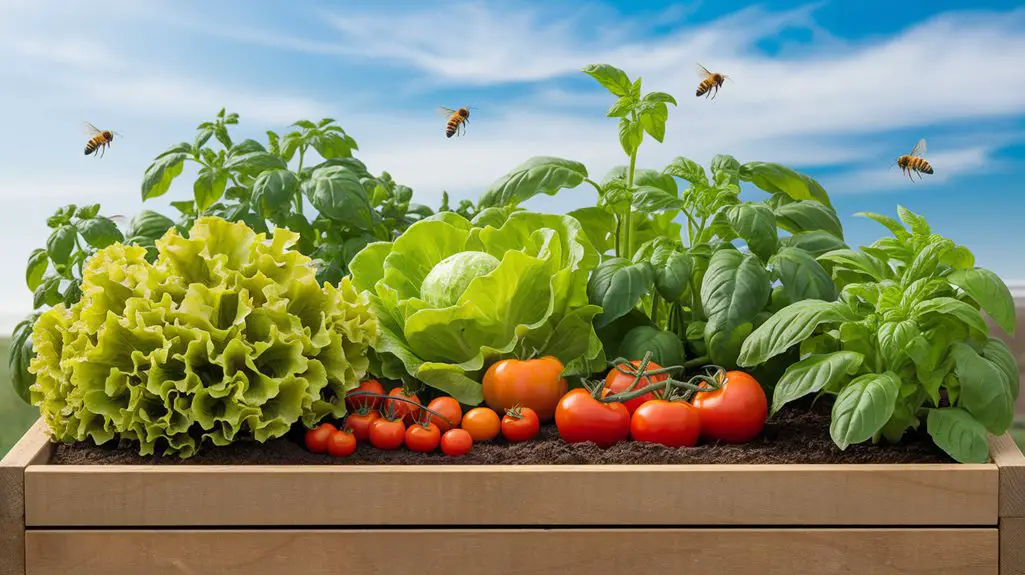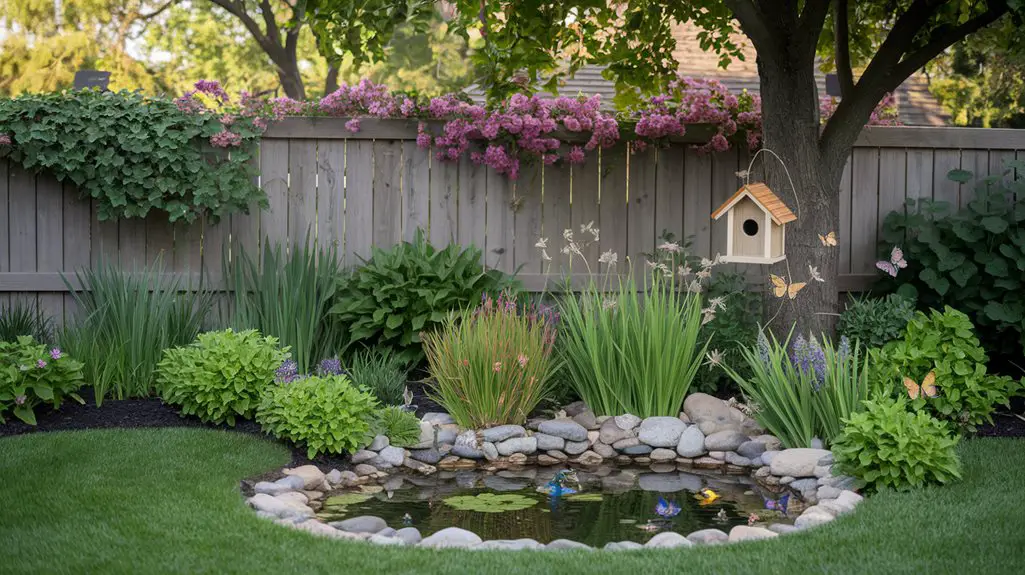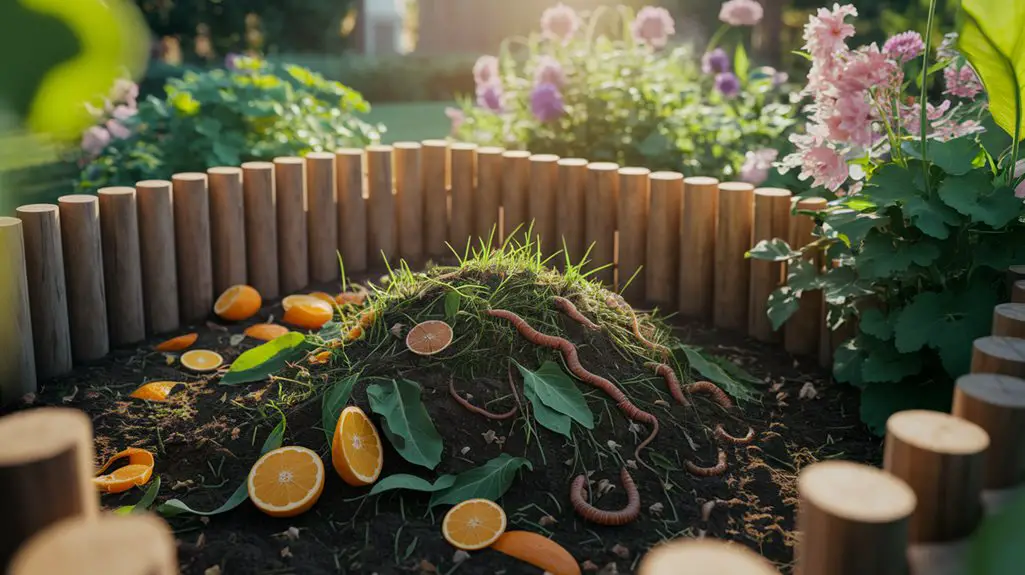Gardeners who switch to raised beds can reduce their water consumption by up to 30% while growing more food in less space. You'll find this efficiency isn't just convenient—it's a cornerstone of sustainable growing practices. Raised beds create ideal conditions for plant roots through improved drainage and soil aeration, while simultaneously preventing erosion and minimizing soil compaction. The structural advantages don't end with resource conservation; they extend to creating resilient micro-ecosystems right in your yard.
The Environmental Benefits of Raised Garden Beds
When you choose to garden in raised beds, you're making a significant contribution to environmental conservation beyond just growing your own food.
These elevated plots minimize soil compaction and erosion while maximizing water efficiency, reducing consumption by up to 30% compared to traditional gardens.
Raised beds create perfect microclimates for beneficial insects and soil microorganisms to thrive, boosting your garden's biodiversity.
They also prevent nutrient runoff into waterways—a major environmental concern with conventional gardening methods.
In addition, raised garden beds can improve soil quality by allowing for better drainage and aeration, which promotes healthier plant growth.
Water Conservation Advantages in Elevated Growing Spaces
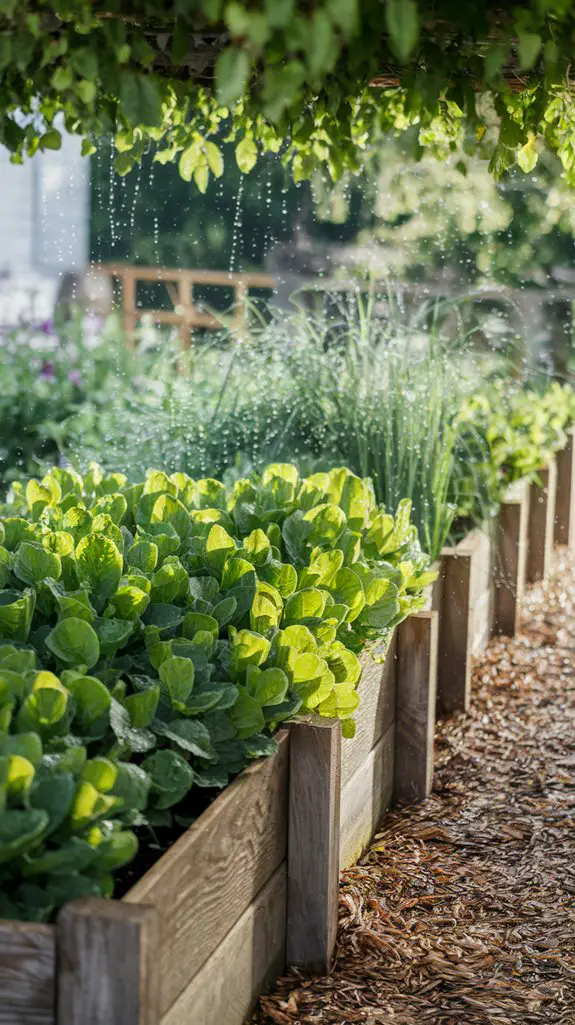
The intelligent design of raised garden beds offers remarkable water efficiency that directly addresses our planet's growing water scarcity challenges. You'll notice immediate reduction in water usage as the contained structure prevents excessive runoff and evaporation that plague conventional gardens.
| Water Feature | Raised Beds | Ground Level |
|---|---|---|
| Runoff | Minimal | Significant |
| Absorption | Targeted | Dispersed |
| Evaporation | Reduced | High |
| Drainage | Controlled | Unpredictable |
| Water Needs | 30-50% less | Standard |
The elevated design allows you to direct water precisely where plants need it—at their roots. This targeted irrigation means you'll use less water while maintaining healthier plants. Additionally, you can easily install drip systems or soaker hoses for maximum efficiency, ensuring each precious drop serves your garden's ecosystem rather than being lost to the surrounding environment. Furthermore, proper maintenance of raised beds can further enhance water retention and soil quality, promoting sustainable gardening practices.
Extended Growing Seasons Through Better Soil Management
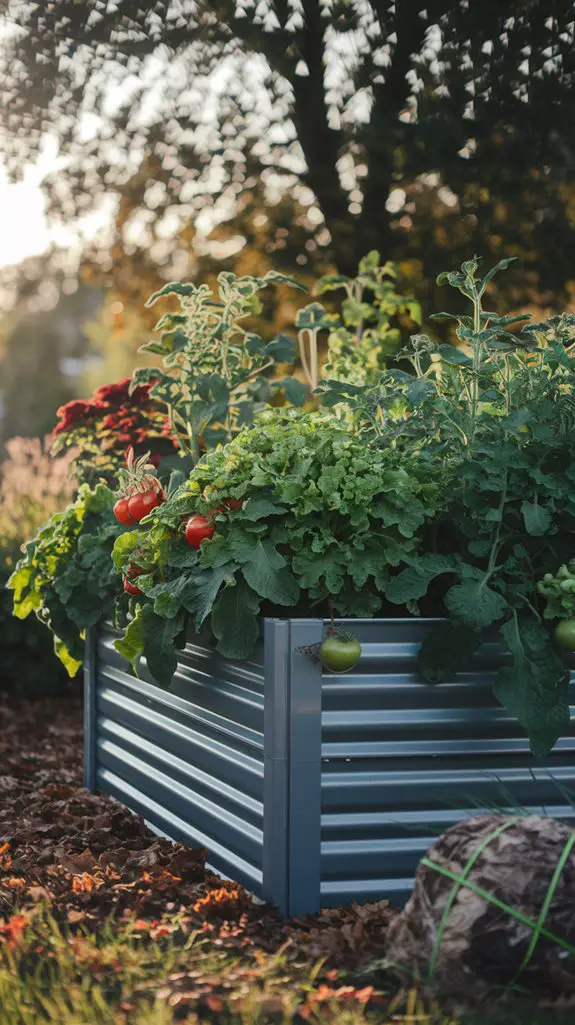
Raised garden beds dramatically extend your growing season by creating ideal conditions for soil to warm faster and retain heat longer than traditional plots. This thermal advantage lets you plant earlier in spring and harvest later into fall, effectively adding weeks to your growing calendar. You'll benefit from enhanced drainage and aeration in raised beds, preventing soil compaction that would otherwise stress roots during seasonal changes. By incorporating organic matter more effectively, you're creating a living soil ecosystem that maintains ideal temperature and nutrient availability. During colder months, you can easily add row covers or cold frames to your raised beds, further extending production. The controlled soil environment you've created recovers quickly from temperature fluctuations, protecting tender seedlings and established plants alike while maximizing your sustainable food production throughout the year. Additionally, maintaining healthy soil is crucial for achieving optimal growth and yields in your garden.
Accessibility and Ergonomics for Long-Term Gardening
Beyond season extension, gardening success depends on physical comfort and accessibility—key factors often overlooked in traditional ground-level plots. Raised beds eliminate constant bending and kneeling that strain your back, knees, and joints, making gardening accessible for everyone regardless of age or mobility constraints.
You'll find that properly designed raised beds—typically 24-30 inches high—create an ergonomic workspace that prevents fatigue during planting, weeding, and harvesting.
Consider incorporating seating edges or building at wheelchair height to further enhance accessibility. This design feature not only improves usability but also allows for better soil management, which is crucial for sustainable gardening practices.
This ergonomic advantage isn't merely about comfort; it's about sustainability. When gardening doesn't cause physical strain, you're more likely to maintain your garden consistently, leading to better plant care, higher yields, and a longer-lasting relationship with your garden ecosystem.
Controlling Soil Quality for Optimal Plant Health
Unlike traditional garden plots where native soil limitations dictate what you can grow, raised beds offer complete control over your growing medium—arguably the most significant advantage for sustainable gardening success.
You'll create the perfect foundation by customizing soil blends to match specific crop needs while enhancing microbial activity essential for plant health.
- Build nutrient-rich soil by layering compost, worm castings, and organic matter that retains moisture while improving drainage.
- Prevent contamination from lawn chemicals, lead, or other environmental pollutants that might be present in ground soil.
- Adjust pH levels precisely for acid-loving plants like blueberries or alkaline-preferring vegetables like asparagus.
This soil sovereignty translates to healthier plants that naturally resist pests and diseases, reducing the need for interventions and creating a self-sustaining ecosystem that improves yearly as you nurture it. Additionally, raised beds encourage enhanced microbial activity, which helps support nutrient cycling and plant health.
Minimizing Pest Management Without Harmful Chemicals
When you cultivate diversity in your raised beds, you create a natural defense system against devastating pest infestations without resorting to toxic chemicals. Companion planting pairs aromatic herbs like basil and marigolds with vegetables to naturally repel unwanted insects while attracting beneficial predators. The elevated design of raised beds makes manual pest removal easier—you'll spot cabbage worms or aphids before they multiply. Install simple physical barriers like floating row covers or copper tape to block slugs and flying pests. Consider introducing beneficial insects like ladybugs and lacewings that hunt pest species. Your raised bed's healthy, balanced soil naturally strengthens plants' immune systems. Strong plants resist pests more effectively than stressed ones. Additionally, practicing natural pest control can significantly enhance your garden's resilience.
Space Efficiency for Urban and Suburban Sustainability
Raised garden beds transform limited urban and suburban spaces into productive growing areas that maximize food production per square foot.
When you're working with small yards, patios, or even balconies, vertical growth becomes essential. You'll produce considerably more food in raised beds through strategic companion planting and vertical trellising.
Modern urban sustainability demands we rethink traditional gardening.
Raised beds deliver:
- Space optimization with configurable shapes that fit awkward spaces where traditional gardens can't exist
- Multilevel growing potential with trellises and hanging systems that utilize vertical space
- Microzoning capabilities that allow multiple climate conditions in minimal square footage
Additionally, raised garden beds can improve soil quality by allowing better drainage and enhanced nutrient retention, which supports healthier plant growth.
Preventing Soil Erosion and Runoff Issues
Soil loss represents one of the most significant environmental challenges in traditional gardening, but raised beds offer a simple yet effective solution to this problem. By containing soil within defined borders, these structures prevent topsoil from washing away during heavy rains or irrigation.
You'll notice less soil runoff with raised beds because their elevated design creates natural barriers against water flow. The contained environment allows you to engineer proper drainage systems using materials like gravel layers at the bottom.
This two-pronged approach—containment plus drainage—significantly reduces nutrient-rich runoff that might otherwise contaminate local waterways with fertilizers and amendments.
Additionally, raised beds help maintain soil structure integrity, preventing compaction and preserving beneficial microbial ecosystems that contribute to sustainable soil health year after year. Furthermore, incorporating affordable outdoor seating furniture can enhance the overall functionality and enjoyment of your garden space.
Integrating Raised Beds Into Permaculture Systems
Although permaculture systems typically mimic natural ecosystems, raised beds can enhance these designs by creating productive microclimates and defined growing zones.
You'll find raised beds serve as perfect edges—those valuable interfaces where productivity thrives in permaculture philosophy.
Position your raised beds thoughtfully to facilitate sector planning and zoning. They'll become natural dividers between wild areas and intensively managed spaces, creating beneficial relationships between different system elements.
- Connect beds to water harvesting systems like swales or rainwater catchments
- Stack functions by using bed walls as thermal mass to moderate temperatures
- Design beds as keyhole gardens to maximize edge while minimizing movement
Additionally, incorporating polyculture planting into your raised beds can further increase biodiversity and resilience in your permaculture garden.
Conclusion
Your raised bed is like a lifeboat in a sea of environmental challenges. It's not just a gardening choice; it's your personal ecosystem where you're both creator and caretaker. As you tend these elevated havens, you're conserving water, nurturing soil, and creating resilient habitats. In your hands, these simple structures become powerful tools for sustainability—where every seed planted helps repair our fragile planetary balance.

